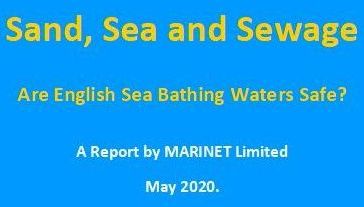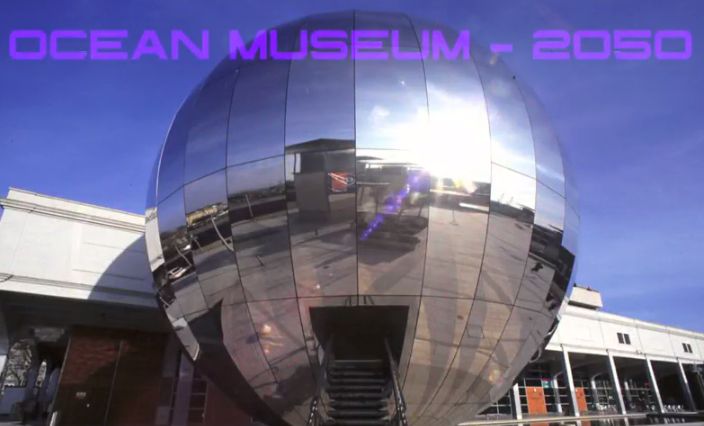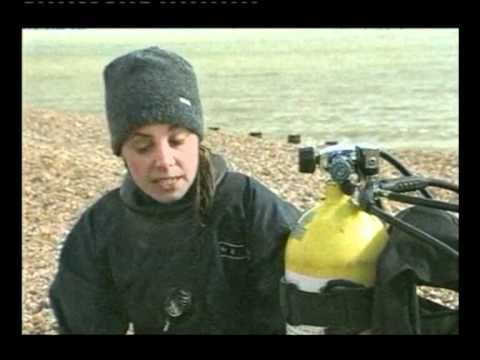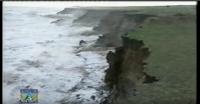A 14 minute video from the USA on dredging and the resultant coastal erosion, showing the both causes of it and the methodology capable of correcting the loss of shoreline, can be seen by going to: www.youtube.com/watch?v=zYMEh8kkRKs&feature=player_embedded If those of you who have your houses, businesses or beaches threatened by dredging and the Shoreline Management […]
» Campaigns » Marine Aggregate Dredging
See below the contents for a brief synopsis of each item on this page
- USA Video on coastal erosion and dredging
- Fathoming ‘Sand Waves’
- MARINET response to CSIRO (Australia’s Commonwealth Scientific and Industrial Research Organisation)
- Eumarsand — A European approach to Marine Aggregate Dredging
- Tracking the Dredgers
- House of Commons Crown Estate Inquiry, input from MARINET
- European Justice and Dredging
- Response to Outer Thames (OT) Potential Special Protection Area (pSPA) Consultation
- Marine & Fisheries Agency (MFA) British Marine Aggregate Producers Association (BMAPA) Support
- Correspondence with Anne McIntosh
- MARINET presents evidence that offshore dredging will cause beach erosion
- Seabed Recovery following Dredging
- Letter from America — Dredging and Erosion — Comparisons of Mis-management
- MARINET’s Comments on UK Licence Applications
- Evidence for the Anglian Offshore Dredging Association Confirming the Link Between Offshore Dredging and Erosion of the Adjacent Coastline
- Offshore Aggregate Dredging and Coastal Erosion
- Dredging, Defence, the Dutch and UK Dithering
- The Dutch, DEFRA and the Dreaded Dredging
- Crown Estate Socio-Economic Report on Marine Aggregate Dredging
- Aggregate dredging may be threatening Sizewell nuclear power station
Peter Waller of Felixstowe has been studying papers on Sand Waves and their mobility, and following much reading has come up with an interesting analysis.
MARINET response to CSIRO (Australia’s Commonwealth Scientific and Industrial Research Organisation)
CSIRO was asked by the Australian Government to consult with UK and US organisations on the impact of marine aggregate dredging in these two countries, and thus to advise on lessons applicable to Australia should a similar decision be made in that country to dredge for marine aggregate.
‘Eumarsand’, the European Sand and Gravel Resources site could prove to be a step toward responsible sanity as it directly states the environmental harm brought about by offshore aggregate mining.
Ever wondered where all of those ships, dredgers, tankers, good and bad, are in the sea? Now you can find out.
This is the MARINET submission, dated 11th March 2010, to the House of Commons Treasury Select Committee considering “the Management of the Crown Estate”. Our submission provides evidence on how the Crown Estate and the UK Government have managed, and often mismanaged, the seabed, its ecosystem and the related coastline in order to exploit the seabed, which is owned by the Crown Estate, for sand and gravel.
Although the emphasis is on port dredging, the following European Court of Justice ruling on the application of The European Habitats Directive could have a decisive bearing on aggregate dredging and its impact of our offshore and coastal areas.
A well worded response to the Outer Thames pSPA consultation by Fisherman Chris Wightman acting on behalf of the Anglian Fishermen’s Association.
The MFA website content seen under ‘Marine Environment’ leaves us with little doubt of its full support of the dredging industry. The exploitation of the environment obviously takes full priority over and above concern for our sea, seabed and coastal environment in their eyes.
MARINET wrote to Anne McIntosh, who has been Shadow Minister for Environment, Food and Rural Affairs since 8th September 2009, to express our concern of the ongoing impasse regarding continuing Offshore Aggregate Dredging. She in turn wrote to Huw Irranca Davies who is the existing Parliamentary Under-Secretary of State in DEFRA.
The Ministers reply to her consisted of the usual output as regards dredging as seen earlier on our website, so a follow-up was sent to Anne McIntosh to cover our response to the content, some quotes and points of which our members might find useful when dealing with the matter.
MARINET has assembled a critique, based on a reading of the literature and scientific studies from around the world, of the assertion made by the aggregate companies that offshore dredging for sand and gravel does not cause beach and coastal erosion. This MARINET report explains the process by which this erosion occurs, and presents the evidence behind this reasoning.
You will recall that the spokesman for BMAPA originally denied any damaging impact to the sea bed as a result of dredging. Following our provision of evidence disproving this claim in our objections to licence applications, this was later amended by a claim that full recovery resulted within a year of the termination of dredging operations. Now read on…
Jerry Berne of Sustainable Coastlines wrote this philosophical treatise comparing the dredging and erosion situation (mal)practised in the USA and in the UK.
A record of the comments submitted by MARINET to the UK government and the aggregate companies in connection with aggregate dredging licence applications.
The following evidence confirms that it is the in-fill of the offshore dredged pits from the surrounding seabed which causes beach draw-down.
Yet a further paper has come to light on coastal erosion brought about by Offshore Aggregate Dredging in a paper entitled: EFFECTS OF MARINE SAND EXPLOITATION ON COASTAL EROSION AND DEVELOPMENT OF RATIONAL SAND PRODUCTION CRITERIA written by Emre N. Otay, Paul A. Work and Osman S. Börekçi It tells how such mining yields an inexpensive […]
Lessons learned from a fact finding mission to The Netherlands comparing the Dutch restrictions on offshore aggregate dredging and protection from coastal erosion to those of Britain.
For years public meetings discussing the issues of coastal erosion, saline flooding and offshore aggregate dredging have attracted regular comments along the lines of “the Dutch would never do it like this”. But until this week few people have taken the time and effort to visit Holland, speak to the relevant experts and assess the realities.
On 6th November 2008 the Crown Estate published a new report on the levels of marine dredging, the staffing of the industry and the financial contribution derived and resulting from the activity.
Is there evidence that the offshore sandbanks — the Dunwich and Sizewell sandbanks — are being diminished by offshore aggregate dredging? If so, does this change threaten the stability of Sizewell beach and the long-term physical integrity of the nuclear power station at Sizewell, Suffolk? These are the questions which are examined in this paper by […]


























